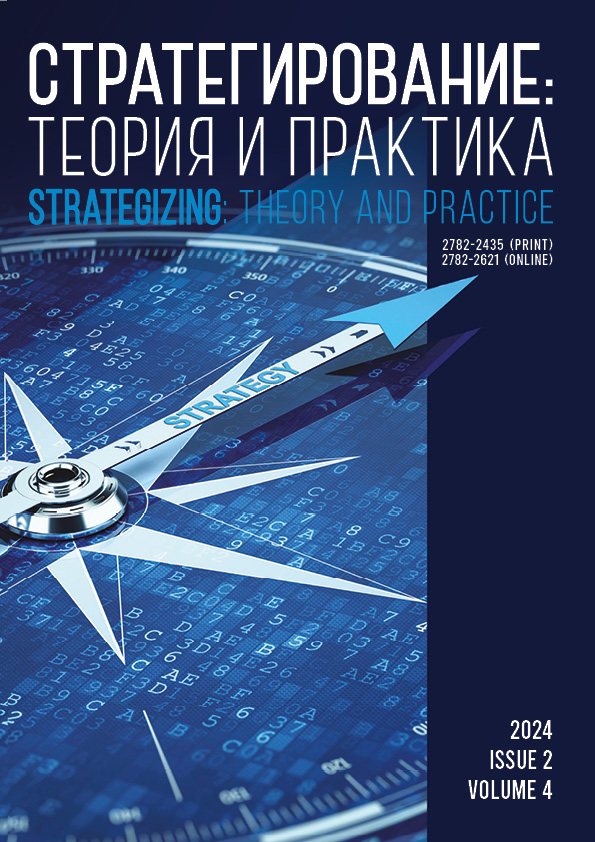Acceleration Digital LLC
Moscow, Russian Federation
The author applied the methods of Professor L.V. Kvint’s scientific school of strategizing to the construction industry in the Russian Federation. Strategic threat is a set of adverse conditions and factors that affect the strategic results. This term belongs to the first stage of strategizing which analyzes external and internal environment and assesses new opportunities and threats. The research featured various strategizing issues in the domestic construction industry, in particular, those that increase labor performance. The factors that reduce labor productivity were divided into several groups as “an unstable contractor”, “an unstable team”, and “an unstable worker”. The article describes strategic threats to the development of the construction industry and introduces some ideas on how to strategize labor performance, e.g., by developing and implementing social and technological innovations. In this regard, the priority tasks should include the following measures. The best workers should be encouraged to develop their professional skills and paid as much as qualified engineers. Robotic complexes and technical systems are to replace heavy physical labor. Innovative construction technologies and products should cover a wide range of construction types.
methodology of strategizing, construction industry, labor productivity, factors of low productivity, qualification of specialists, strategic threats
1. Andreeva EA. Analysis of the labour productivity dynamicsin construction industry in Russia. Bulletin of Civil Engineers. 2017;63(4):243–250. (In Russ.) https://doi.org/10.23968/1999-5571-2017-14-4-243-250
2. Bogatyreva IV, Kozhukhova NV, Zheleznikova EP. Analysis of the current state of labor productivity in Russia. Russian Journal of Labor Economics. 2018;5(3):683–698. (In Russ.) https://doi.org/10.18334/et.5.3.39239
3. Petrov MN, Zimina SV, Dyachenko DL, Dubodelov AV, Simakov SS. Dual-pass Feature-Fused SSD model for detecting multi-scale images of workers on the construction site. Computer Research and Modeling. 2023;15(1):57–73. (In Russ.) https://doi.org/10.20537/2076-7633-2023-15-1-57-73
4. Deming Eh. Vykhod iz krizisa: novaya paradigma upravleniya lyudʹmi, sistemami i protsessami [Exiting the crisis: a new management paradigm for people, systems, and processes]. Moscow: Alʹpina Pablisher; 2012. 419 p. (In Russ.)
5. Kvint VL. K istokam teorii strategii: 200-letie izdaniya teoreticheskoy raboty generala Zhomini [Origins of the theory of strategy: 200th anniversary of General Jomini’s work]. St. Petersburg: NWIM RANEPA; 2017. 51 p. (In Russ.)
6. Kvint VL. The concept of strategizing. Vol. I. St. Petersburg: NWIM RANEPA, 2019. 132 p. (In Russ.)
7. Kvint VL. Search and investigation of philosophical base of the theory of strategy. Interrelation of philosophical and strategic thinking. Administrative Consulting. 2016;85(1):15–21. (In Russ.)
8. Kvint VL, Novikova IV, Alimuradov MK. Alignment of global and national interest with regional strategic priorities. Economics and Management. 2021;27(11):900–909. (In Russ.) https://doi.org/10.35854/1998-1627-2021-11-900-909
9. Kiselitsa EP, Shilova NN, Shelomentsev AG. Improving the labour productivity of construction organizations in an innovative economy. Russian Journal of Innovation Economics. 2021;11(1):225–238. (In Russ.) https://doi.org/10.18334/vinec.11.1.111807
10. Korol SP, Korol RA. The national project “Labour productivity” as a direction of the sectoral economy development. Russian Journal of Labor Economics. 2022;9(5):893–908. (In Russ.) https://doi.org/10.18334/et.9.5.114773
11. Mamleeva ER, Trofimova NV, Sazy`Kina MYu. Industrial policy in Republic of Bashkortostan. Geopolitics and Ecogeodynamics of regions. 2022;8(2):134–145. (In Russ.)
12. Mironchuk VA, Sychanina SN, Sholin YuA. Analysis of the causes of low labor productivity in the Russian Federation. Natural-Humanitarian Studies. 2020;(28):170–176. (In Russ.) https://doi.org/10.24411/2309-4788-2020-10095
13. Mikhaylova NV, Fyodorova LA. Kontseptsii U.Eh. Deminga – “Opornye tochki” sovremennoy sistemy Vseobshchego upravleniya na osnove kachestva [W.E. Deming’s Front Points of a modern quality-based total management system]. Age of Quality. 2012;(5–6):33–37. (In Russ.)
14. Moiseev AV. Analysis of modern theoretical approaches to strategizing in Russia. Administrative Consulting. 2021;7(3):60–65. (In Russ.)
15. Nikonova AA. Metodologicheskie aspekty strategirovaniya nauchno-tekhnologicheskogo razvitiya nestatsionarnoy ehkonomiki vs praktika strategicheskogo planirovaniya i proektirovaniya v RF [Strategizing scientific and technological development of a non-stationary economy vs. practice of strategic planning and design in the Russian Federation: Methodological aspects]. Rossiya: tendentsii i perspektivy razvitiya: Materialy XX Natsionalʹnoy nauchnoy konferentsii s mezhdunarodnym uchastiem [Russia: Trends and Development Prospects: Proceedings of the XX National Scientific Conference with International Participation]; 2020; Moscow. Moscow: Institute for Scientific Information on Social Sciences; 2021. p. 203–209. (In Russ.)
16. Nikonova AA. Strategizing a new economy – “new systemic” planning. Economics of Contemporary Russia. 2020;90(3):90–102. (In Russ.) https://doi.org/10.33293/1609-1442-2020-3(90)-90-102
17. Kvint VL, Novikova IV, Alimuradov MK, Sasaev NI. Strategizing the national economy during a period of burgeoning technological sovereignty. Administrative Consulting. 2022;165(9):57–67. (In Russ.) https://doi.org/10.22394/1726-1139-2022-9-57-67
18. Yaroshevich NYu. Strategizing: The development of a scientific paradigm. e-Forum. 2022;6(1).





